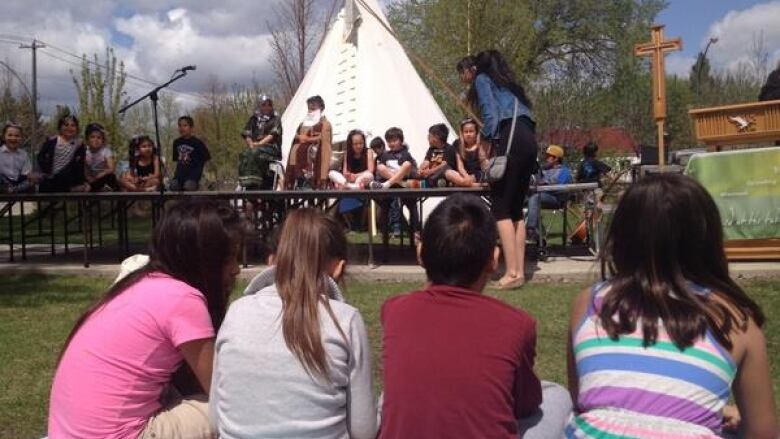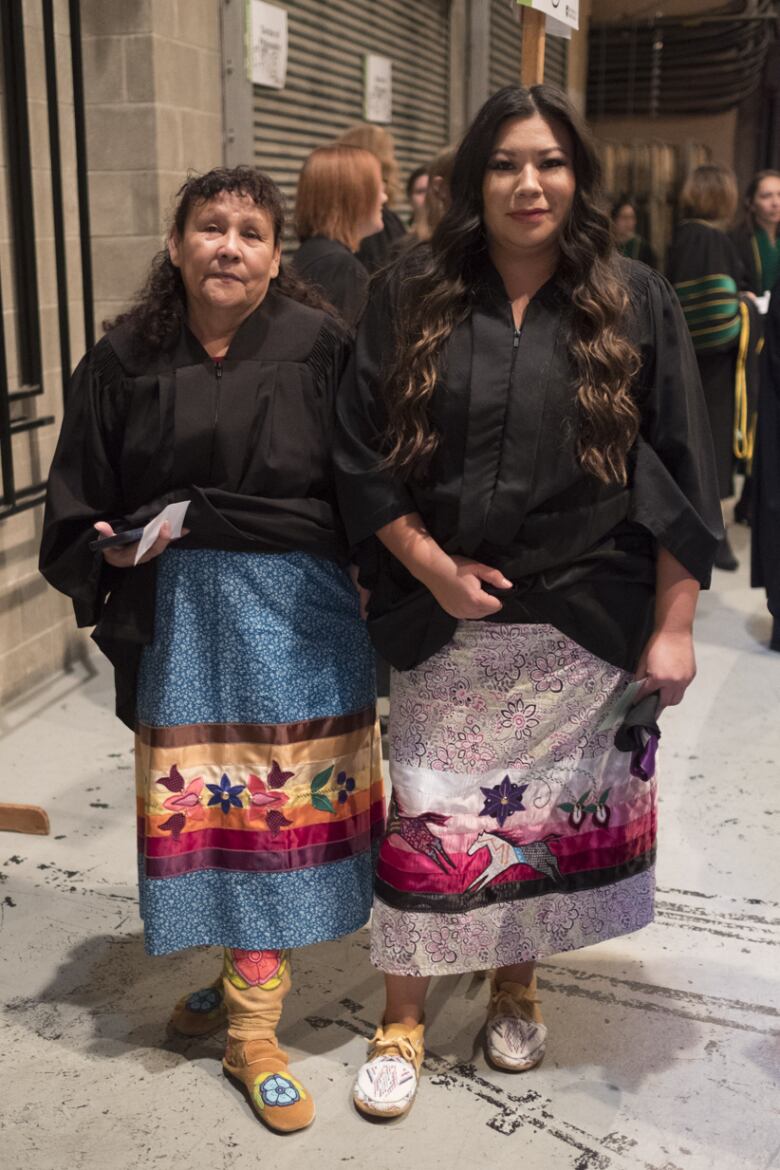Cree language classes booming in Saskatchewan
Cree education class created after demand spikes

People of all ages are connecting with Cree culture by learning the language in Saskatchewan.
A bilingual elementary schoolofferingCree language learning in Saskatoon is so popular it may have to be rebuilt.
At the University of Saskatchewan, a class recently received their Indigenous language certificates in curriculum studies, a first at the institution.
Both programs are a response to the Truth and Reconciliation Commission calls to action to increase the education system's work in supporting the survival of Indigenous languages.
School bursting at the seams
Gordon Martell, superintendent of Greater Saskatoon Catholic Schools, said St. Frances Cree Bilingual School now has about 650 students. Less than a decadeago, it had 100.
The increased enrolment is welcome, but it has put pressure on the small school which Martell said has a tiny gymnasium, a shortage of washroom facilities, and a very small lunch room although it has the largest nutrition program in the division.
The school now has 14 portables, leaving less-than adequate playground space, meaning only half of the students can go out for recess at a time.
In May, the division consulted with the community and determined there was not enough space on the property to renovate the school or add more portables.
The division requested that the Ministry of Education rebuild the school on the former site of the Sion Middle School, at Seventh Street E. and Grosvenor Avenue, which is now occupied by the Saskatoon Tribal Council. The lot is double the size of the current one and the division currently leases it to the Tribal Council.

The division is expecting to hear the decision on that request during budget time in spring 2018. Martell said he is "optimistic and hopeful," especially considering the school's mission.
"First Nations families and other families are deciding that Indigenous language is very important to them. That's something in the education sector that we are very proud of, that we are able to collaborate with the community to help retain and proliferate Indigenous language," he said.
"Lots of Indigenous languages are threatened or jeopardized and it's important that if families want that opportunity to re-instill or instill the language in their children that they've got that option."
New teaching method
Kevin Lewis, assistant professor at the University of Saskatchewan, designed the two-year course on teaching Cree which recently had its first set of graduates.
He said he was asked to develop the program with language teachers in mind, because there was a need in the province.
Most of the students were teaching full-time and took the course duringweekends. Three of them work at St. Frances.

The students were both Indigenous and non-Indigenous. Lewis said those who could speak the language already worked "magically" to foster the learning of those who couldn't.
Harry Lafond, 68, said when he went to university, there were no such classes. The lifelong learner, who holds three degrees including a master's degree in education, was one of the students who went into the class speaking Cree but said he wanted to learn the culture around the language.
"I just thought: this is what I've been looking for," he said.
Lafond said the class exceeded his expectations.
"The instruction was occurring as close to the way elders teach as I'm aware of. It was not focused on content, the main focus was on process and relationship," he said.
The former principal from Muskeg Lake, where he was later the director of education, said there is much to learn from the Cree approach to learner-teacher relationships.
He wants to see a shift from linguistically-focused teaching, with word memorization, to putting a cultural context to the language. This would include learning the stories, the songs and the ceremonies and what they represent to the people who speak it.
Towards the end of the course, Lafond said non-Cree speakers were able to get up in front of the class and speak simple sentences in the language. Learning from teachers with their certificate, Lafond said children are likely to pick up the language even quicker.
The two year-certificate program recently began again in the fall.












_(720p).jpg)


 OFFICIAL HD MUSIC VIDEO.jpg)
.jpg)



























































































